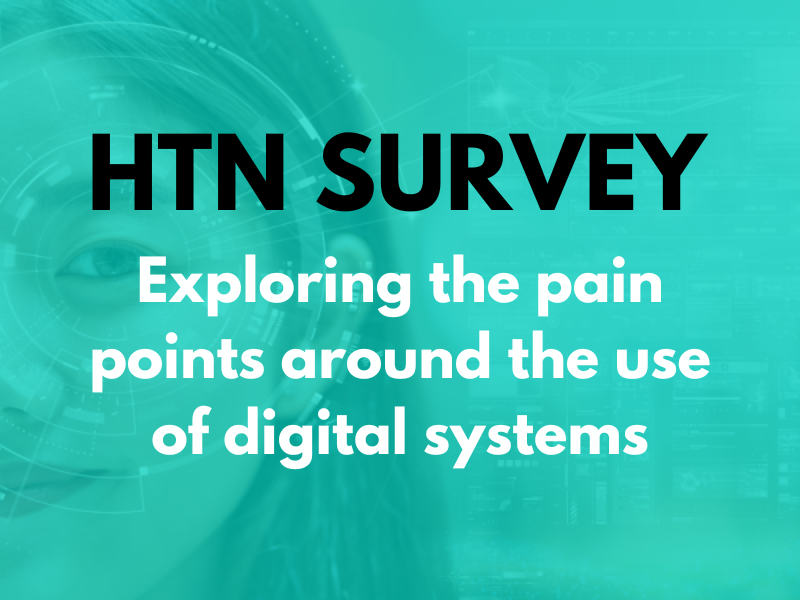South West London ICS has published its digital strategy for 2025 – 2028 setting out a digital vision prioritising citizen and health professional empowerment, joined up patient pathways, and the “seamless” provision of health and care services for all citizens, “supported by new technologies”.
The strategy sets out five digital priorities for the next three years across digital infrastructure, integrating systems, harnessing data, empowering citizens, and innovation.
It notes actions to be taken on digital infrastructure, to include establishing expert digital teams and developing digital competence, implementing systems and processes that are effective, and consolidating systems to reduce duplication. It adds developing a “consistent, robust, and secure” digital infrastructure to cover cyber security and “effective” information governance, and ensuring interoperability and value for money of system procurements, as well as levelling up provider digital maturity. According to the strategy, this will allow clinicians, carers, and staff access to digital tools which will “enable them to be truly mobile” and improve staff productivity.
On integrating systems and data strategy, actions to be taken include enhancing and levelling up information systems to improve information flow and continuity of care; continuing to “drive forward” the EPR levelling up agenda and developing a strategic approach to future EPR provision across the ICS; enhancing the functionality of the London Care Record; rationalising order communications systems to “provide a platform to integrate SWL ICS diagnostic services across all settings”; and using data “in new ways” to improve outcomes, identify areas for improvement, and target resources “more effectively”.
To empower citizens, the ICS commits to supporting self-care and enabling citizen access to their health and care records through the NHS app and patient portals. It adds to work with citizens to determine “the best way to provide digital solutions with agreed minimum requirements” such as single sign-on, and to use patient-centred tools and interactive care plans to prevent ill health and help people stay well. And, for innovation, the strategy highlights the ICS’s commitment to encouraging and facilitating innovation, including providing access to the latest technology and research, and attracting and retaining “the best workforce”.
The strategy next goes on to outline examples of how these digital priorities support the delivery of wider ICS priorities, including the potential for Ambient AI to “significantly improve” healthcare by simplifying medical record creation and “enhancing clinician-patient interactions”; enabling better access to diagnostic tests; supporting secure remote access to diagnostic images to foster flexible working and avoid duplication or delays; using data “intelligently” to help manage waiting lists at ICS level, drive prioritisation, and reduce “unwarranted variation in access”; using patient-initiated follow-up (PIFU) and virtual consultations to increase access and efficiency; ensuring “seamless communication and coordination” amongst healthcare providers; offering citizens tools to “allow them to undertake their own monitoring”; and signposting people to the appropriate care provider.
On key enablers, the strategy recognises the importance of leadership, governance, and people, committing to ensuring that SWL is “well led” by “building and nurturing digital and data leadership”, investing in digital leadership skills, and ensuring clinical involvement in design and decision making. ICS boards will also be “well equipped to lead digital transformation and collaboration”, and organisations will have “well-resourced teams” with the skills required to deliver modern data and digital services, with data and digital literacy “ubiquitous” across ICS staff.
The strategy points to work commencing on the creation of a “target architecture design” to support the SWL ICS Infrastructure Blueprint, with an aim to map all SWL organisations against the blueprint and “develop a view of the as-is position”. From this, the strategy continues, “we will be able to describe what the target architecture will look like and be able to create roadmaps at an organisational level to achieve this”. The ICS’s Enterprise Architecture Blueprint also follows core themes including streamlining processes and establishing ICS-wide technical forms; working with regional and national teams to enhance cyber resilience; designing and implementing systems and applications supported by open APIs; integrating AI and machine learning technologies “thoughtfully”; encouraging a cloud-first approach “guided by best practice”; and ensuring technology initiatives adopt a digital-first approach.
On the NHS app and patient engagement portals, SWL ICS reports that these have been introduced into “three of our four acute hospitals”, with over 400,000 patients having registered, representing “between 60 and 70 percent”. These patient engagement portals are integrated into the NHS app, and cover services including appointment management, diagnostic test results, access to medical records, questionnaires and messaging, and wait list validation. Work is also underway, according to the strategy, to develop use of the NHS app to support the deployment of PIFU, as well as to pilot the use of the app for pre-operative questionnaires, and to develop “meet and greet” processes such as welcome messages and service-specific information to help guide patients through their elective journey. Over the next three years, the ICS commits to ensuring all provider portals can be accessed through the NHS app, to increasing the adoption rate of the NHS app to “above 65 percent of SW London citizens”, to tackle digital exclusion, and to support integration and wider use of functionality.
And for digital inclusion, the ICS sets out five considerations: inclusion in the digital strategy, inclusive digital projects, communication and publicity, leverage resources and commercial opportunities, and increase visibility and reporting. The strategy also details a series of recommendations and objectives in alignment with the What Good Looks Like framework, such as targeted outreach and education programmes, enhanced digital infrastructure access, the publication of a digital inclusion toolkit to “signpost staff to good practice, national guidelines, and local resources”, and the tracking of digital inclusion as part of the benefits realisation plan on all new digital projects.
Other areas of work detailed within the strategy include SWL’s focus on a Longitudinal Health & Care Record (LHCR) to help offer seamless communication across multiple organisations, enable shared care, and offer a single view of an individual’s health. Steps to be taken toward this cover engagement around understanding “the future clinical models across the patient journey”; an analysis of existing systems, processes, and challenges; an “articulation of the vision for improved patient care, operational efficiency, and clinical outcomes”; developing an outline of needs and ambitions to consider for the future of EPRs; undertaking a financial appraisal of affordability and ROI; and identifying risks and opportunities “including commercial”. An AI Adoption Framework and a Data Quality Framework are also being “devised” to ensure joint ownership and effective governance.
Finally, the strategy sets out what good looks like for SWL ICS: creating and encouraging a digital first approach and sharing innovative improvement ideas from frontline staff; driving innovation through collaboration with academia, industry, and other partners; and using data to inform care planning and support innovative and digitally-driven models of care. It goes on to note, making use of digital tools and technologies such as EPMA and barcoding to support “safer care”; employing decision support and other tools to “help clinicians follow best practice” and “eliminate quality variation”; a system wide approach to collaborative and MDT care planning “using an array of digital tools and services”; and making data available to support clinical trials, real-world evidencing, and AI tool development.
To read the strategy in full, please click here.
Updates on digital strategy and transformation in health and care
The latest board papers from Mid and South Essex ICB highlighted the impact of digital tools and data in supporting a number of different projects and priorities, including total triage, whole system stewardship, modern general practice, emergency preparedness, resilience and response, and more.
Oxleas NHS Foundation Trust’s January 2025 board meeting also shared key updates on digital from across the trust, outlining key areas of focus for upcoming digital transformation and digital services. Opening with a response to the NHS Change consultation, the trust shared hopes for the 10-Year Health Plan, outlining four different themes, one of which focused on funding models that support transformation by facilitating “a shift in the focus of funding from hospitals to communities, and towards digital”. The trust noted the importance of putting in place infrastructure “that supports patients, clinicians, and staff”, including key points such as the ability to access information needed easily and safely; ease of use for clinicians; and cyber security.
In the US, the Department of Health & Human Services recently published its AI Strategic Plan, with a focus on four key domains: catalysing innovation in health AI and unlocking “new ways to improve people’s lives”; promoting trustworthy AI development and ethical and responsible use; “democratising” AI technologies and resources to promote access; and “cultivating AI-empowered workforces and organisation cultures” to ensure AI’s safe and effective use.






